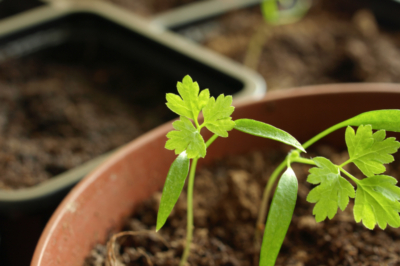Although chervil is very similar to parsley – but it has its own interests when it comes to sowing. How to sow it, when is the best time and what is the ideal location?

The right timing
Since chervil is an annual, it must be grown every year. The right timing is crucial! If it is to be planted outdoors, it is advisable to sow it only after the Ice Saints in May. If you are brave and live in mild regions, you can try sowing it as early as the end of March. Chervil tolerates cold to a certain extent.
On the other hand, chervil can be grown at home all year round. It is recommended to sow it at home from the beginning of March. Then he can get enough sunlight and does not acquire ‘asparagus growth’.
That’s what you need!
If the time is right, all you need is a suitable container for growing, such as a pot or a seed tray, or alternatively a prepared bed. At best, choose seeds from a variety that has stood the test of time. And not to forget: A suitable soil. Chervil loves a:
- nutrient-rich,
- humus and
- well-drained substrate.
Grab the seeds and let’s go!
Attention: The seeds of chervil do not germinate for long. They should not be older than one year. Here goes:
- Scatter seeds on the soil (do not cover with soil! – light germinators).
- for row planting in the bed: distance of 15 cm
- water the seeds and keep them moist during the following days
- ideal germination temperature: 18 to 20 °C
- germination period: 15 to 20 days
After sowing
Once the seeds have grown into small plants, they can be planted out. The optimal location for chervil is in a semi-shaded position. The soil there should be kept fresh to moist.
If you want to harvest chervil throughout the garden season, grow it regularly . Normally, it is enough to sow new seeds every 2 weeks.
Tips & Tricks
Chervil represents a so-called site-faithful plant. This means that it does not like to be moved (due to its fine root system). Therefore, direct seeding is recommended.









